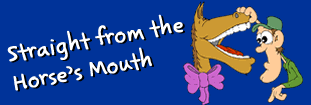Nonfiction Book Identification and Structure
From the title on the cover to the glossary at the end of a book, young people need to be able to identify the structure of nonfiction works.
Identify Structures. Identify structures in a wide range of examples. For instance, identify glossaries in books and websites:
- Cryptologists (Google Limited Preview) by Aaron Rosenberg. Find the glossary in the table of contents and locate in in the book.
- Codes & Ciphers from CryptoKids. Go to the Code section and notice the glossary button. Click to view the glossary.
Apply Features. Apply nonfiction features to authentic problems. Look for the features of print materials in websites. Use government and organization sites for quality information resources to explore. For instance, use the sidebar, the table of contents, and headings/subheadings as you explore nonfiction:
- Intermediate: Archeology for Kids from National Park Service
- Middle School: Safety and Injury Prevention: Fitness for Kids, Soccer Injury Prevention
Connect to Content Areas. Connect identification activities to content area activities such as government studies to demonstrate the importance of the structure such as the glossary. Use comparisons amongst works to practice identification.
- Kids in the House - explore how a bill becomes law (notice the Glossary)
- Ben's Guide to U.S. Government for Kids
- Constitution Day (Primary w/ audio)
- What Does the President Do? (Primary w/ audio)
- What Is the Constitution?
Demonstrate Understanding. Ask students to label elements in PowerPoint using pages copied from Google Books.
- Diverse World (Google Limited Preview) by Richard Spilsbury, Louise Spilsbury
Create concept maps using ReadWriteThink tools or Inspiration to show the structure of the contents.
- Alphabet Organizer. Create your own glossary based on reading a number of glossaries. (See Lesson Ideas)
- Circle Plot Diagram. Use the circle plot to show the structure of a nonfiction book. (See Lesson Ideas)
- Compare & Contrast Map. Use the compare and contrast map to compare the structure of two books or websites. (See Lesson Ideas)
English Standards:
Nonfiction Book Identification and Structure
Examine the following standards. Think about how you'll prepare children for later grades and apply the skills from earlier grades.
- Standards
- K.2.1 Locate the title and the name of the author of a book. (Core Standard)
- 1.2.1 Identify the title, author, illustrator, and table of contents of a reading selection. (Core Standard)
- 2.2.1 Use titles, tables of contents, and chapter headings to locate information in text. (Core Standard)
- 3.2.1 Use titles, tables of contents, chapter headings, a glossary, or an index to locate information in text. (Core Standard)
- 4.2.1 Use the organization of informational text to strengthen comprehension. (Core Standard)
- 5.2.1 Use the features of informational texts, such as formats, graphics, diagrams, illustrations, charts, maps, and organization, to find information and support understanding. (Core Standard)
- 6.2.1 Identify the structural features of popular media (newspapers, magazines, online information) and use the features to obtain information. (Core Standard)
- 7.2.1 Understand and analyze the differences in structure and purpose between various categories of informational materials (such as textbooks, newspapers, and instructional or technical manuals). (Core Standard)
- 8.2.1 Compare and contrast the features and elements of consumer materials to gain meaning from documents. (Core Standard)
- 8.2.7 Analyze the structure, format, and purpose of informational materials (such as textbooks, newspapers, instructional or technical manuals, and public documents). (Core Standard)
- Resources
- Book Cover Guide from ReadWriteThink. Explore the elements of a book for Grades 3-5 (Lessons)

